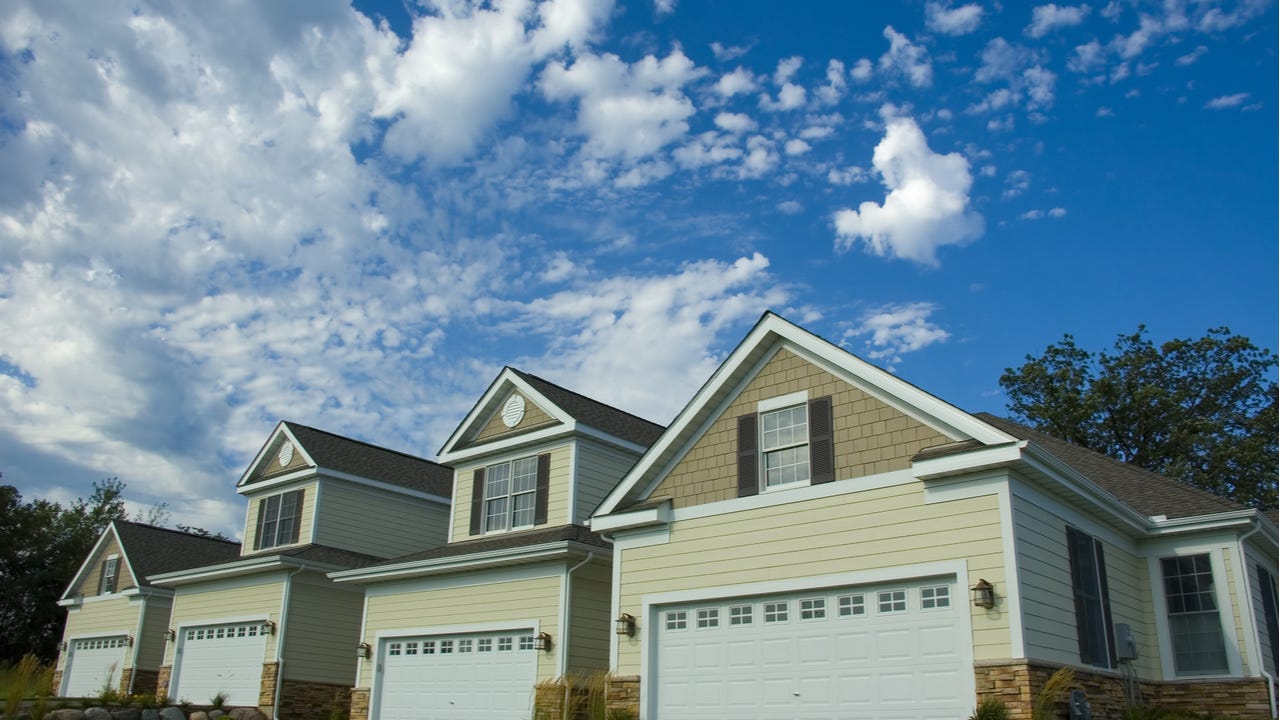What is a patio home?

When you’re looking to buy a home, your browsing can turn up a wide range of listings: houses, condos, townhouses and more. In your search for a place that fits your budget, you might come across a type of property known as a patio home.
While you might think a “patio home” is simply an obvious description for a home with a patio, that’s not the case. We explain more about this common housing type below.
What is a patio home?
“Oddly enough, a patio home doesn’t have to have a patio,” says Christine Dupont-Patz, a Realtor with RE/MAX of Cherry Creek in Denver, Colorado, who adds that patio homes are sometimes called garden or cluster homes.
Patio homes are typically part of a community of other similar homes. While they can vary in appearance and size, the majority are limited by height, rarely exceeding one-and-a-half stories.
Patio home vs. condo vs. townhouse
A patio home does have one commonality with a condominium and a townhouse: They are all considered “attached residences,” meaning they share walls with other units.
“Condos often do not own the land directly under the property and can share multiple walls, similar to an apartment,” Dupont-Patz says. “A townhome does own the land under the property and often has multiple levels, with units sharing the side walls.”
Like a townhouse, a patio home includes the land underneath the property. The difference between these two is what’s above the ground.
“The main difference between a townhome and patio home is that patio homes are on a single level,” Dupont-Patz says. Some can extend another half story. “The main living space doesn’t have stairs,” she continues. “A patio home can have a similar layout of a ranch home, with smaller square footage.”
Are patio homes cheaper than other options?
Like all real estate, the price of a patio home depends on size and location. A three-bedroom patio home on a golf course in Wilmington, North Carolina, for instance, will have a different price tag than a similar property in Pittsburgh, Pennsylvania.
Regardless of location, the list price of a patio home might look more appealing than a standalone property that isn’t part of a community. There’s a catch, though: You’ll likely need to pay HOA fees.
“While a patio home may cost less than a similar single-family ranch home, buyers need to factor in the association fees,” Dupont-Patz says. “Smaller communities may cover just the grounds maintenance. However, larger communities may have pools, tennis courts, clubhouses and other amenities that require substantial fees.”
If you’re thinking about buying a patio home, Dupont-Patz recommends taking a close look at notes from past homeowners association meetings, as “that’s often when neighbors discuss any concerns or grievances.”
How to finance a patio home
The process of finding a mortgage lender to help you buy a patio home is similar to the process of getting a loan for any condo, townhouse or single-family property. Expect the lender to verify your creditworthiness and require an appraisal of the property.
Keep in mind that the lender will want to make sure you can not only afford to repay the mortgage, but also pay the HOA fees. Use Bankrate’s affordability calculator to get an idea of how much you can afford to buy.
Who are patio homes best for?
The patio home style is an ideal fit for homeowners who don’t want to deal with stairs.
“Those who may have mobility issues or very young children may require a home with no steps that could be a tripping hazard,” Dupont-Patz says. “They’re very popular for those who are downsizing, and many 55-plus communities have patio homes.”
In addition to the absence of stairs, there is also an absence of maintenance in many patio home communities. Many patio homeowners associations handle landscaping duties, Dupont-Patz says, which negates the need for a lawn mower and gardening tools.
Patio home pros and cons
Pros
Because a patio home is on the small side, you’ll likely pay less to purchase it compared to other types of properties. Some patio homes are in communities with clubhouses and neighborhood facilities, so you can also take advantage of those features. The height restriction can be valuable, too, since you won’t have to worry about climbing any stairs.
Cons
Of course, extra amenities come with a bigger price tag. Depending on what your patio home community offers, you’ll have to pay more each month in dues. Plus, if you’re looking for lots of space, a patio home probably isn’t the best option. You’ll be close to your neighbors in general — with shared walls, in some cases — and when you want to escape them, you’ll have less room inside to do that.
Other housing types to consider
| Housing type | Who it’s right for |
|---|---|
| Apartment | Apartments are suited for anyone looking to stay in a prime location for a cheaper price near shopping, restaurant and entertainment centers, often at a more affordable cost than buying a condo or single-family home. |
| Condominium | Condos appeal to those looking for a lower-maintenance living, home with a sense of security, opportunities to be social with neighbors, among other factors. |
| Townhouse | Townhouses are a particularly good option for first-time homebuyers or other budget-minded home buyers who want more space than typically afforded in a condo. |
| Single-family home | Single-family homes are best for families who prefer a huge yard and plenty of room to spread out. Others still prefer a low-maintenance condo or townhome that includes benefits like landscaping, snow removal and exterior maintenance. |
| Multi-family home | Multi-family homes are best for those who are interested in getting into real estate investing and are comfortable with the added responsibility and time commitment that comes with being a landlord. |
| Co-op | Co-ops are most often found in major cities, and they can be good for those looking for security or neighbors who largely adhere to the building’s rules and policies. |
You may also like






